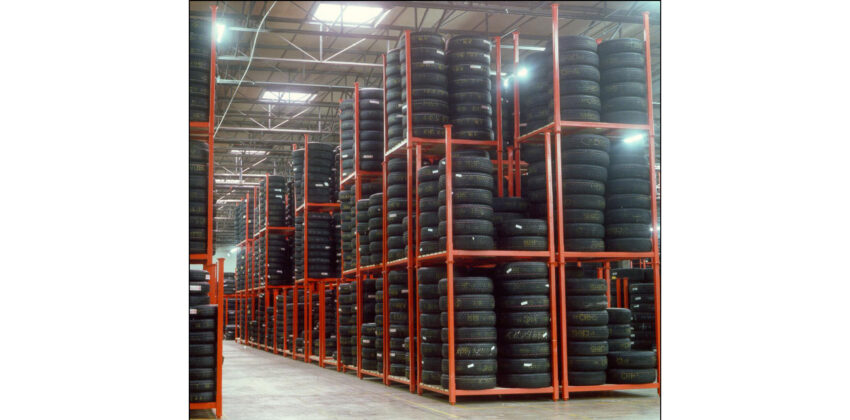Selective pallet racking is a versatile, efficient storage system that enables direct pallet access, making it ideal for operations with diverse inventory needs. It adapts to various warehouse layouts and load requirements while optimizing vertical space usage. However, fixed pallet rack may not always be the best solution, particularly when inventory levels vary significantly, temporary storage is needed, workflows require rapid adjustments, or when the rack and its contents needs to be moved to another location.
To address such scenarios, products are stored on pallets and sometimes stacked multiple pallets high. However, this approach is both inefficient and potentially dangerous. It limits the effective use of vertical storage space, as standard pallets can only be stacked to a certain height without compromising stability or risking damage to the goods.
A portable rack, however, offers a versatile and cost-effective storage solution. Modern portable racks are designed to provide strong structural support, allowing several thousand pounds of materials to be stacked on each level, up to six levels high, without requiring attachment to a wall. When not in use, portable racks can be dismantled for convenient, compact storage.
“Portable racks optimize storage by utilizing vertical space effectively, offering a versatile layout and seamlessly adapting to evolving requirements. These racks are an excellent addition to most warehouses due to their mobility, robust stacking capabilities, straightforward assembly and disassembly, and compact storage when not in use,” says Craig Heil, Container Sales Manager for Steel King Industries, Inc., a leading provider of pallet rack and portable storage rack.
For industry professionals, portable storage rack has proven beneficial in a wide range of common warehouse situations such as fluctuating inventory levels, overflow storage, temporary events, transportable rack, and improving warehouse workflow.
While portable racks have numerous potential applications, choosing models with specific features is essential to maximize their advantages. For optimal capacity and safety, the rack should be specifically engineered to ensure portability while effectively handling vertical loads. Additionally, it should be designed for easy disassembly and compact storage, requiring minimal space when not in use.
To meet the need, Steel King designed a portable rack called Stac-King, which is engineered for portability, stacking, and protecting loads during storage, handling, and transport. This type of rack, which is stackable six units high with a 4,000 lbs. capacity for each, acts as its own pallet, eliminating the need and cost of wood pallets while allowing you to take full advantage of the building height. Vertical posts allow the rack to be stacked without load-on-load contact, reducing product-crushing damage. The rack is fully supported by steel corner columns to further protect inventory. Consequently, during in-plant handling or in shipment, the rack can be safely stacked much higher than wooden pallets, utilizing overhead space more effectively. The portable stacking rack can be dismantled for convenient, compact storage when unused.
“Almost every industry or operation has a use somewhere in their facilities for portable storage racks. We have provided portable racks for manufacturers in many industries ranging from aerospace, automotive, electronics, and heavy machinery to lumber yards, dry storage warehouses, and book dealers,” concludes Heil.
For more information, call Steel King at (800) 826-0203 or visit them online at www.steelking.com.

